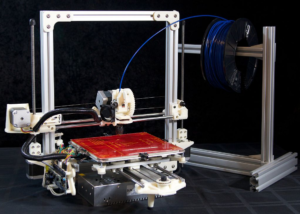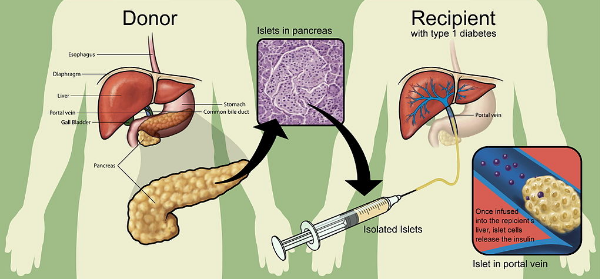By Jerry Mooney
As you are reading this, there are approximately 75,600 people waiting for a transplant and a new person is added to the list every 10 minutes. Not only that, but 20 people sadly lose their lives every day due to no donor being available to them.
Add to Flipboard Magazine.
There are a number of factors which prevent more people from getting the life-saving treatment they need. A big one being that a large proportion of organs that are donated are not actually suitable for transplant,and another being the difficulties with finding a match; you can’t just transplant any old organ into any body – there needs to be a tissue match and finding one can take a lot of time, which is unfortunately, something a lot of people on the transplant list don’t have.
Being one of those people whose health is compromised while waiting for a new organ, or a member of their family, can be frustrating, desperate and completely heartbreaking, but there is some hope. There are lots of new things happening in the medical field, which could change the future of organ transplants and ensure fewer people die waiting for them, much sooner than you might think. Here are a few of them:
Bone Marrow Transplants
Bone marrow transplants have long been used to fight conditions such as blood cancer, as you will probably know, but they could soon be helping organ recipients to live a more normal life without the fear of organ rejection and the numerous drugs they must take to suppress their immune system and prevent rejection thanks to some forward thinking by a few brilliant people, who you can find out about at http://www.massgeneral.org/cts/. Massachusetts General Hospital’s transplant team have been trying out a new technique whereby they transplant donors’ bone marrow along with their organs, and it seems to have a mitigating effect on organ rejection without the drugs and the many side effects they bring.
It works by tricking the immune system into thinking the implanted organ is a natural part of the body, rather than a foreign invader that needs to be fought. Of course, a lot more research needs to be conducted in this area, but the future certainly looks brighter for transplant recipients in this respect.
Gene Editing Technologies
At HeraBioLabs.com, you can find out all about cutting edge gene technologies, which are making it easier to study the efficacy of various drugs. Similar gene editing techniques could also be used, some people believe, to edit the genes of pigs to create human organs for transplant, which would be one way of cutting down on the needless deaths of people on the transplant list.
Artificial Organs
Of course, there are researchers who are working towards a completely different solution to the problem altogether – artificial organs. These are organs that are completely manufactured by scientists, which means that, unlike natural organs, they could be made to really last a lifetime.
Right now, researchers are developing organs which are bioartificial in nature, which are capable of keeping patients alive until a suitable organ is found, but it is thought that, in the not too distant future, we will have access to artificial organs that are as good as the ones we’re born with.
There are some signs that this will happen very soon; take for example the artificial heart created by SynCardia systems which has already successfully kept a patient alive for almost four years and you can see that this is not merely a pipe dream,but a very real,life changing innovation that could soon be the norm.
3D Organ Printing

Image source
If you think printing your own bicycle frame or creating an action figure that’s an exact replica of yourself is impressive, you’ll be blown away by this Ted Talk by Dr. Anthony Atala in which he discusses the possibility of using 3D printer to create new organs and tissues for the body using a mixture of stem cells and biomaterials to create what is basically a working organ for anyone who needs one.
It’s mind blowing to even think about this, but he puts forward a very solid case whereby researchers gather data, using CT scans, about the patient’s organs and then use this to print out, layer-upon-layer a perfect replica of the failing organ using cells and biomaterials.
We’re probably a while away from this sort of thing becoming the norm, but when it does, it could certainly help to plug the gap between organ donors and people waiting for a transplant. I mean, scientists have already successfully printed a human ear, so anything is possible.
Equipment to Keep Organs Alive Outside of the Body
One of the problems with human organs is that they need to be kept inside a living body, being removed very quickly after death, if they are to be of any use to the recipient. Although medical staff do their best to ensure that no suitable organ is ever wasted, unfortunately, this isn’t always the case, due to time and distance restraints. That’s why it’s so exciting to hear that something like the Toronto XVIVO Lung Perfusion System exists.
This amazing piece of machinery enables organs to remain in good condition outside of the body for longer periods of time, so that they don’t lose viability and so that medical professionals can do more detailed checks on them to ensure that they are truly suitable for transplant.
As you can see, scientists and medical professionals are doing anything but rest on their laurels when it comes to trying to improve organ transplants for the people who really need them. Although many of the techniques listed in this post are still a while away from being used routinely, they are much closer to being a reality than you might think and they are set to revolutionize the care and treatment of transplant patients everywhere. No one wants to be sick, but should the worst happen and someone born today need a life-saving transplant, it’s unlikely they’ll have much to worry about thanks to today’s pioneers.



Recent Comments